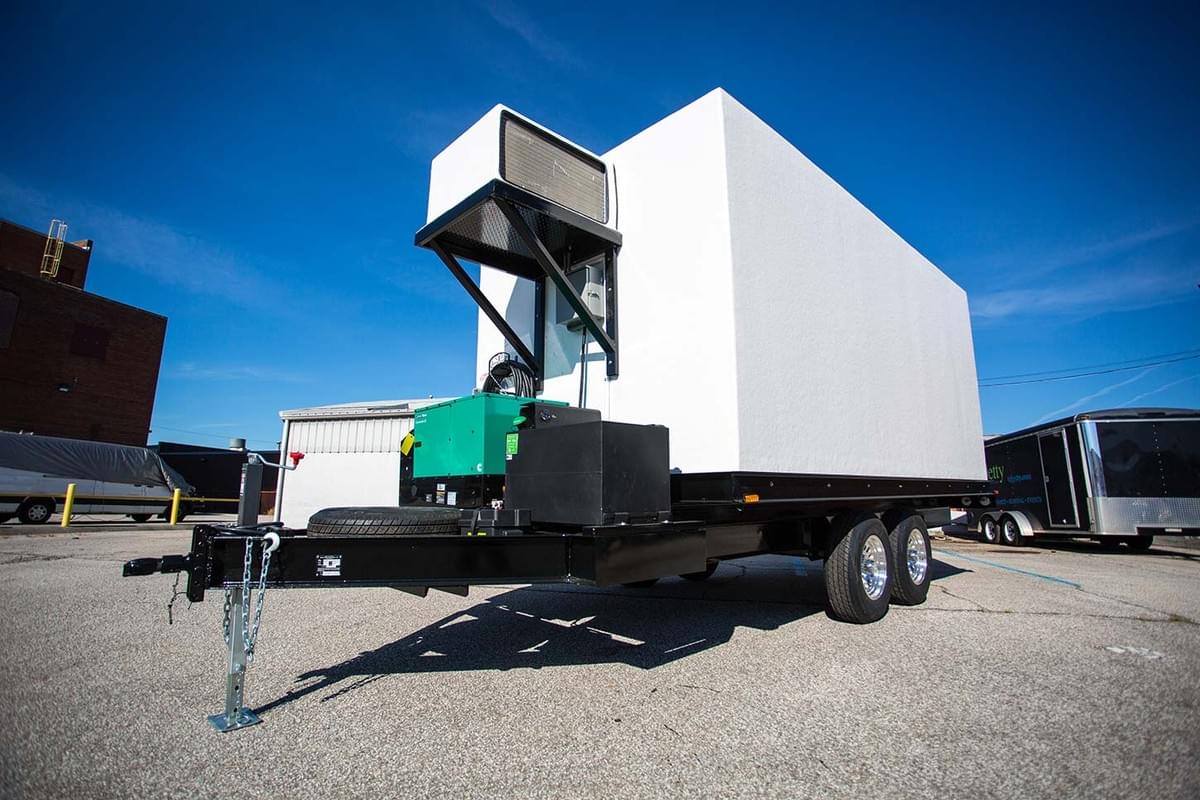A refrigerated trailer is a type of trailer used to transport perishable goods. This includes everything from fruits and vegetables to dairy products.
They are also called reefers because they use an active refrigeration system. Drivers that haul reefers must be vigilant to ensure their trailers are running smoothly and that the temperature is correct for their cargo.
Due to the increasing environmental concerns today, more e-commerce and logistics businesses are shifting to refrigerated trailers.
But how do these trailers work?
In this article, we will briefly overview the working of Refrigerated Trailers.

The Condenser
The condenser is a vital component of a refrigerated trailer. It removes the heat from air coming into the trailer, ensuring that the products in it stay at their desired temperature throughout the transport process.
A condenser is made up of five main components which work together to circulate the refrigerant through the system:
- Compressor
- Evaporator
- Fan
- Coil
- Contactor.
A small diesel engine runs the compressor to draw in and compress gaseous refrigerant. This compressed refrigerant liquefies into high (hot) temperature gas, which is then passed to the condenser. The condenser uses a fan to pull in outside air, which causes the hot refrigerant to lose its temperature. It then goes into the evaporator, turning it back into a liquid. This is then sucked into the compressor to start the cycle over again.
The Evaporator
Evaporators are a vital part of any air conditioning system. They remove heat from the air flowing around the coil and transfer it into refrigerant vapor.
An evaporator coil contains U-shaped metallic tubes that easily conduct the heat. The refrigerant absorbs it as it circulates through the coil. These metal "fins" bring the warm air closer to the refrigerant, triggering condensation and cooling the airflow.
Once the refrigerant has absorbed all the heat from the air, it changes phase to gas and is sent to the condenser. It then changes to a liquid and goes back into the evaporator, which is again extracted from the coil. This cycle repeats multiple times per hour. Check out this website to know more about refrigerated trailer.
The type of evaporator used in a trailer depends on the application it will serve and the temperature at which it is intended to cool. Food preservation, for example, generally requires low refrigeration temperatures, ranging from 40degF to below 0degF (- 18degC).

The Compressor
A small diesel engine powers the compressor, which draws in and compresses the gaseous refrigerant to liquefy it. This high-temperature gas then passes to the condenser, which loses heat via a fan-based cooling system.
The compressor is a crucial component of any refrigeration system because it gives the refrigerant the right pressure to move through the rest of the components. Without it, the entire system fails.
It uses pistons that rotate and a crankshaft rod to force air into the compression chamber. Compressors use oil in their compression chambers lower friction and prevent leakage.
The Battery
The battery is also critical to a refrigerated trailer's refrigeration system. It stores the energy needed to operate the evaporator, which cools and redistributes the air inside the trailer.
There are several ways to power a reefer trailer's battery, including the net or generating electricity from the movement of the truck wheels. A solar-cell-clad trailer, for example, can power the refrigeration unit in sun-rich regions such as Sweden.
Another way to power the refrigerant unit is to use a small electric generator within the trailer. According to ConMet, It's a simple but effective way to reduce diesel fuel consumption and emissions.
Thermo King and Carrier Transicold are among the top companies offering all-electric reefer trailer refrigeration systems. As a result, they've been recognized by Environment + Energy Leader as a Top Product of the Year.

Bottom Line
Overall, the components of a refrigerated trailer work together to create a controlled environment ideal for transporting temperature-sensitive products over long distances.